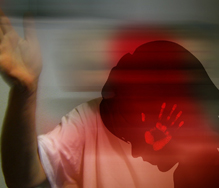- News & Comment
-
Online Shop
Online Services
Looseleafs
Law Reports
Books and eBooks
- CPD & Events
- Authors
- About Family Law
- Contact












 15 APR 2024
15 APR 2024

 15 APR 2024
15 APR 2024

 15 APR 2024
15 APR 2024

 15 APR 2024
15 APR 2024

 15 APR 2024
15 APR 2024






This means being taken away from their mothers – typically the victim in all this. But she’s not usually the one being violent. Most often, it’s the children’s father or stepfather who is. As rates of reported domestic abuse soar – incidents sufficiently serious to be recorded by police as crimes rose 5% between 2016 and 2017, according to the Office for National Statistics – it’s estimated by the charity Safe Lives that 130,000 children live in households with “high‑risk” domestic abuse. So why are victims investigated by social services, rather than the perpetrators who cause such physical and mental harm?
Too often victims’ experience is a grotesque indictment of the child protection system that is failing both women and children. A clinical psychologist tells me of one mother who survived a shockingly violent relationship despite getting little support from any service that might have been expected to help. Instead of support and concern for her safety, she lost her children to adoption. In an extraordinary twist, this woman now has a criminal conviction for failing to protect her children, while her abuser remains free. And while the police are seeing more cases of domestic violence, charging rates have dropped. Removing children from their mother – often breaking up sibling groups in the process – by blaming that terrified victim for “failing to protect” is the ultimate in victim-blaming. It has unpleasant and deeply sexist echoes of the way women are regularly told to change their behaviour, clothes and where they walk so they don’t get raped.
We will never effectively protect children if we view the prevention of harm from domestic abuse as the victim’s job: it fails to put the responsibility in the right place – with the perpetrator. We know that domestic abusers regularly break non-molestation orders with virtual impunity. And so the logic of children’s services is fatally flawed: when even the courts cannot restrain a violent criminal, what hope has any victim? How can a woman be required to pack up with the kids and leave home when the refuge and support services to provide a safe haven for mothers and their children no longer exist in so many areas of the country?
In court, the judge is told that the mother has “failed to prioritise her children’s needs over her own”. Social services know perfectly well that the abuse isn’t the victim’s fault – but, they tell the court, she’s the only protective factor in her kids’ lives. And she’s failing at it. Removing the children is, as they see it in some situations, the only good option. But the real issue isn’t that she can’t protect her children from a violent abuser, but that she’s being left to do so alone, then blamed for her inability to achieve the impossible. This illogical and sexist attitude to protecting children from domestic abusers must stop. The Association of Directors of Children’s Services signalled a change in approach in their statement earlier this year, saying: “A focus on prevention and changing perpetrator behaviours is long overdue and the government must lead this endeavour from the front as a matter of urgency.”





Leave a commentOrder by
Newest on top Oldest on top